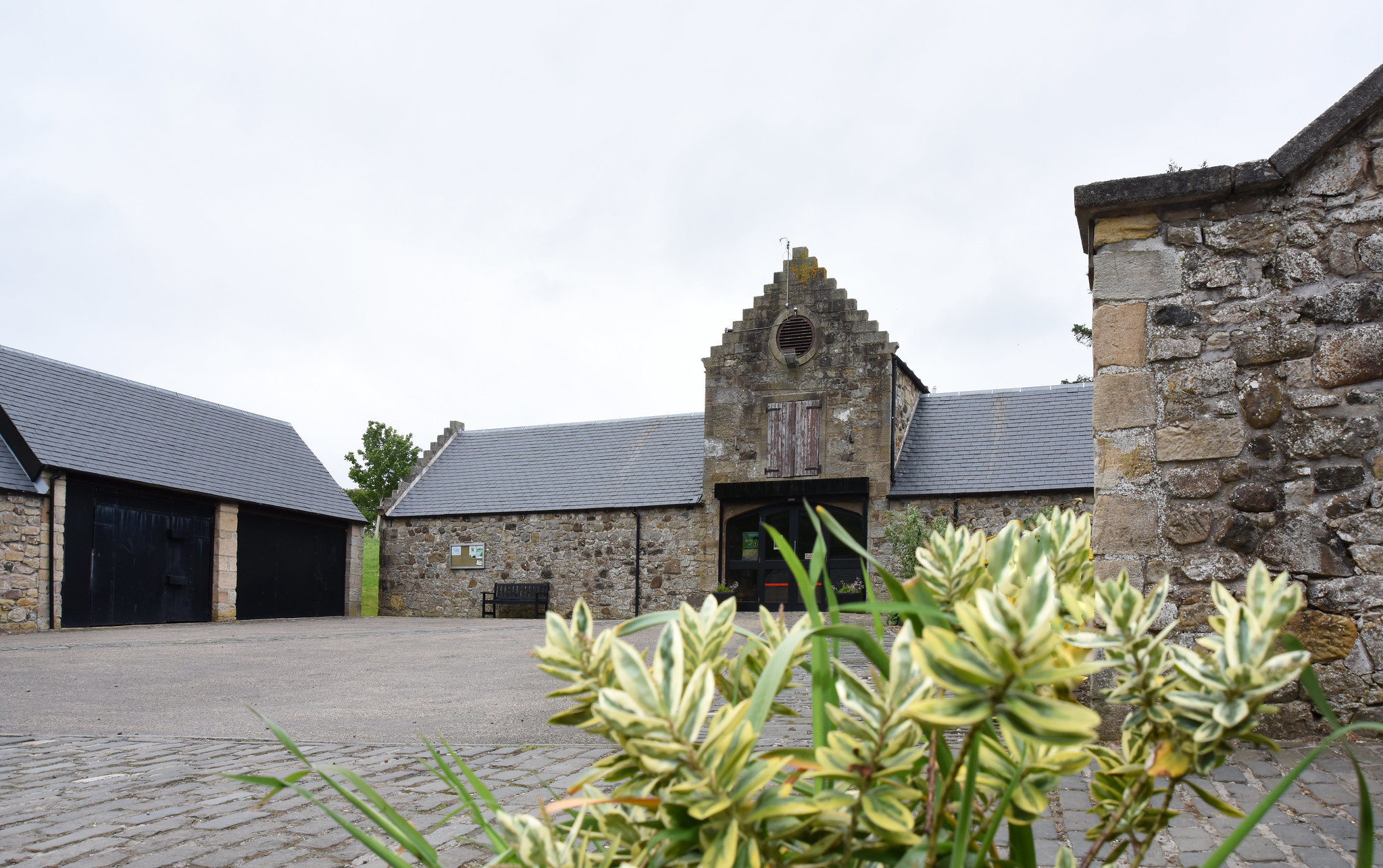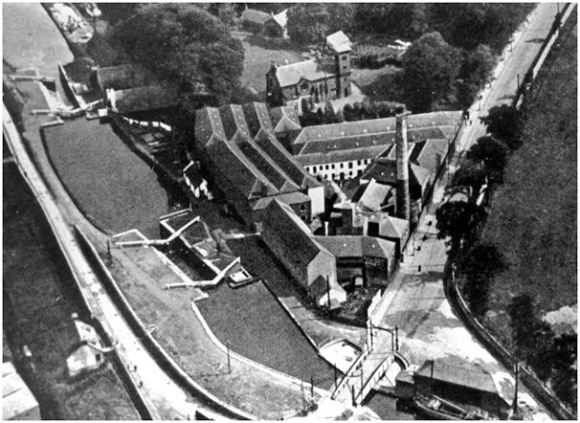Great Place volunteer Iain Murray tells the story of Aitken’s Brewery and the connection between Falkirk’s ale and Australia.
Aitken’s Brewery
As a child, one of my favourite “things to do” was to walk down Hope Street – preferably to Falkirk Football Club’s Brockville Park – and look through the open windows that overlooked the bottling room. Hundreds of clinking glass bottles would hurry through the machinery to be filled with Aitken’s Ales for people much older than me. The smell was not unpleasant, the noises were fascinating, and I never imagined the worldwide destinations of these beers brewed in Falkirk.
Aitken’s Brewery was established in Falkirk (where the town centre Asda now stands) in 1740 by John Aitken, in an area between Lint Riggs and Market Street. In 1797, the brewer moved its main production across Market Street and set up home where it remained until the demolition of the brewery in 1970, following dissolution of the company in 1968 (Gibbs). The office premises still remain (below). This North Australian newspaper advertisement indicates how important the British empire was for providing extended markets for Falkirk based companies:
“The thousands of people in Australia who believe in the superiority of British beer over anything else of the kind yet produced, will be downright glad to hear that that colossal English (sic) proprietary, the Aitken Ale people have determined on making Australia a separate and distinct field for their enterprise. The proprietary of the world-famous Aitken's Ale have resolved, however, on yet greater improvement, and for some time past started on the important work of providing a brew specially for Australia. The coming summer season will find this available all over Australasia. The British firm's agents are Messrs. Phillips & Co., of Bridge-Street, their agents for New South Wales, and these gentlemen are prepared to do business on special terms in bulk and bottled ales of this special Australian brew at, we are informed, very reduced prices. The attention thus given to the colonies in this important essential of British Ales is satisfactory evidence of the growing importance of these colonies in the eyes of the world beyond the seas.” (4 September 1885)
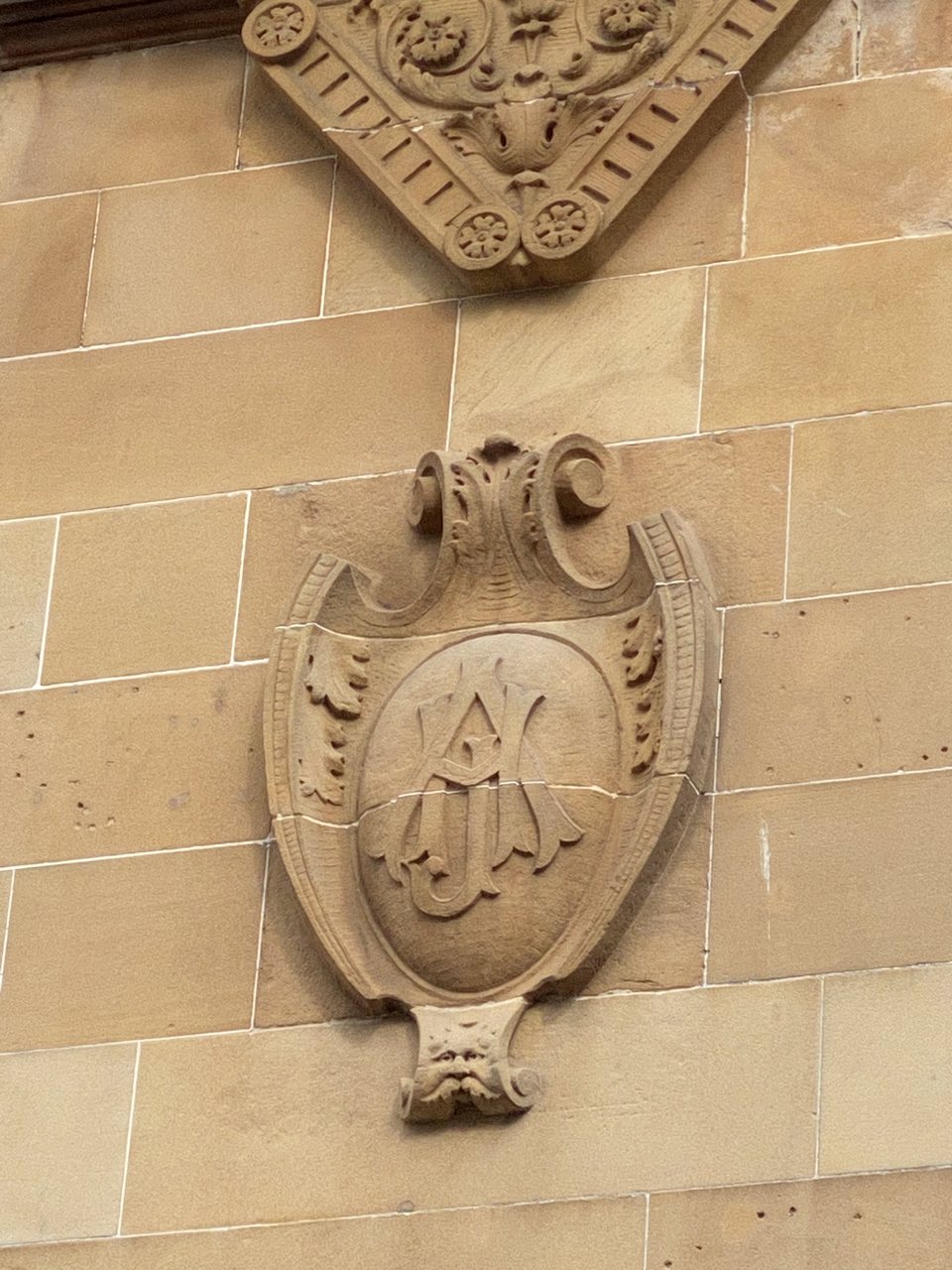

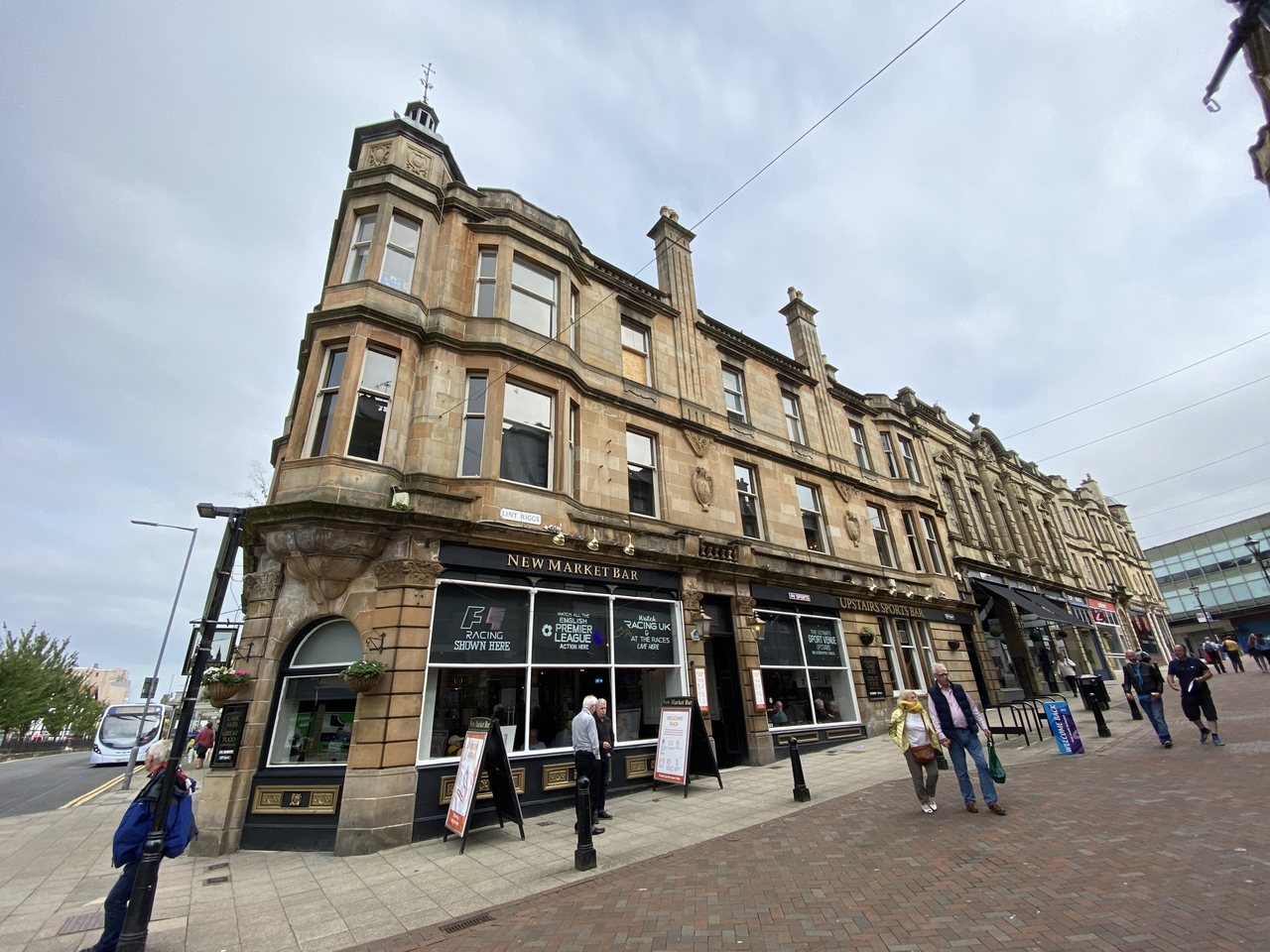

Lifebuoy
Aitken’s created an ale that was designed to endure the long sea voyage to Australia and arrive in perfect condition with no sediment. In 1885 the legal firm of Messrs. Robert Phillip & Co of Sydney applied to register a trade-mark with the following description: “A label, circular in shape, with an outside ring of white, then a thicker line of red and narrow ring of white, within the circle a boy is swimming and holding a lifebuoy with “Aitken’s Pale Ale” written on it.” Other trademarks were arranged by the same law firm and announced in the New South Wales Government Gazette (3 July 1885).
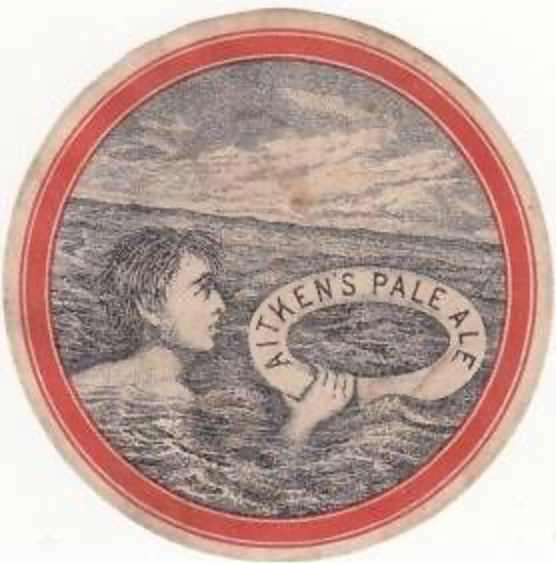

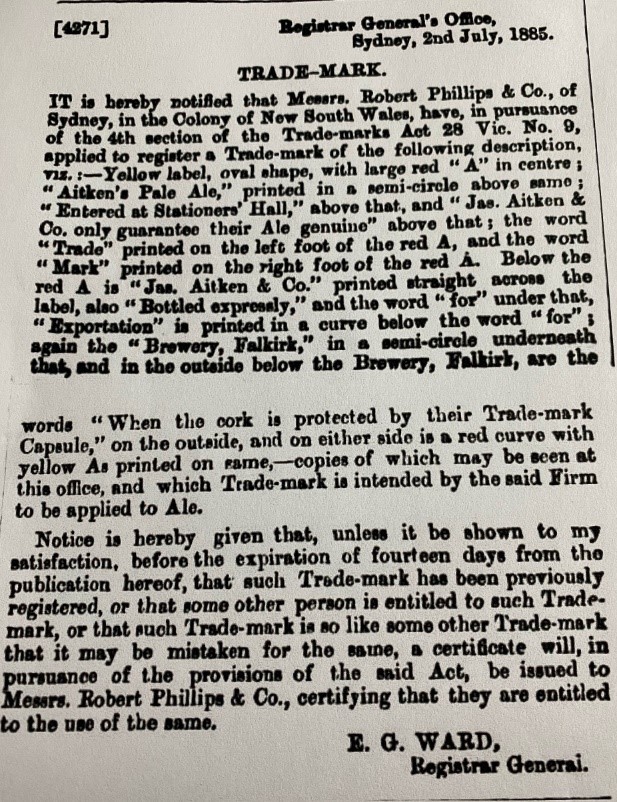

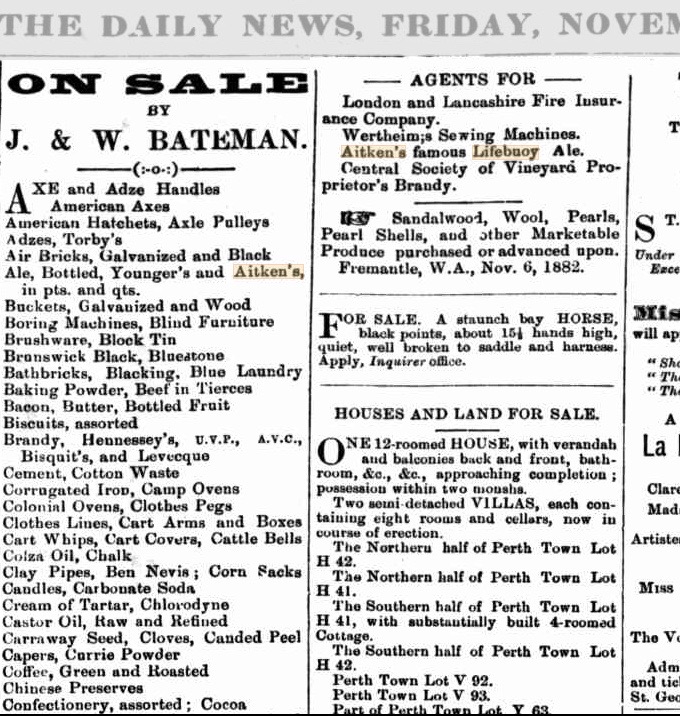

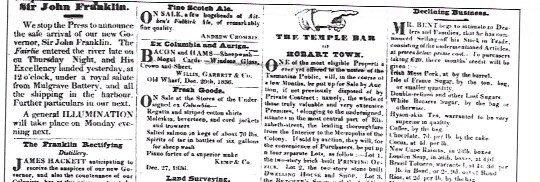

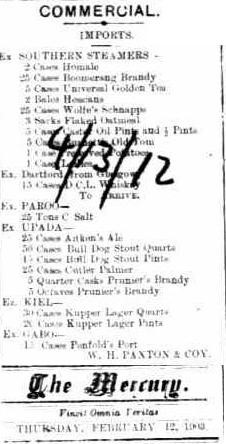

Below, you can see a couple of brand labels for Aitken’s Ales:
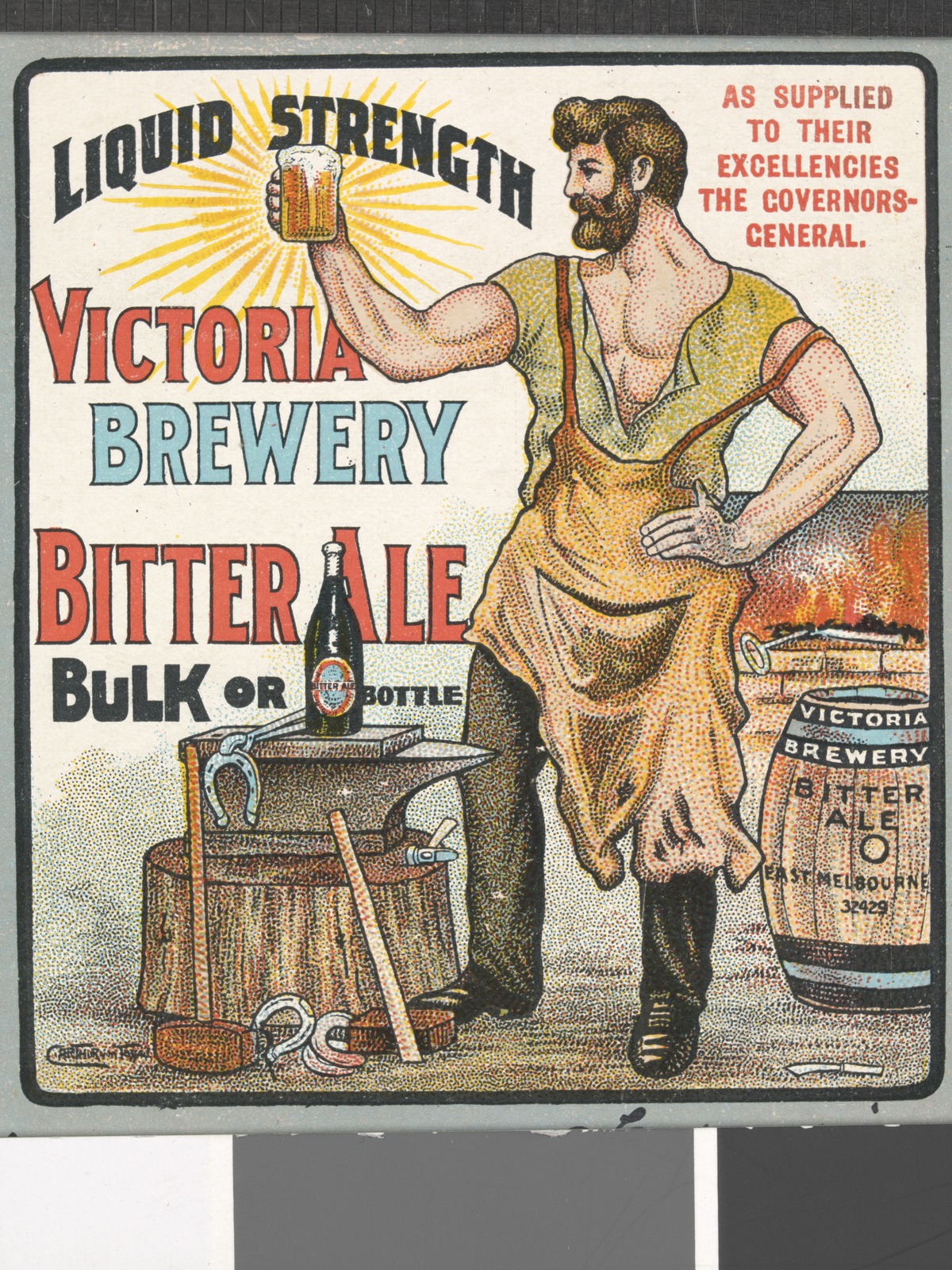

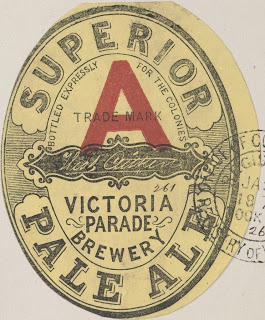

The Upada
One of the ships used to take the barrels and bottles to Australia was called the Upada which was owned and operated by the British India Steam Navigation Company (previously the Calcutta & Burmah Steam Navigation Company), from 1899. This company was first established in Glasgow by MacKinnon and MacKenzie. They provided mail services to Calcutta and Burma (now Myanmar) and later the Arabian Gulf area (PO Heritage). There are multiple references to Upada imports in various Australian ports in the National Library of Australia.
Many years later, I was fortunate to travel on an educational cruise on a British India Line ship called the Uganda (a previous Uganda was a sister ship of the Upada). For the stately sum of £65, pupils from Larbert High school travelled from Greenock to Funchal, Lisbon, Vigo and La Rochelle during a 2 week trip. The Uganda was later used as a hospital ship in the Falklands conflict. I considered taking a post as a Navigation Cadet after the cruise, but I was terrible at physics! In this photo I’m aboard the Uganda 1968 with my first girlfriend. David and William McMillan in the back row both became professional footballers with Hibernian.
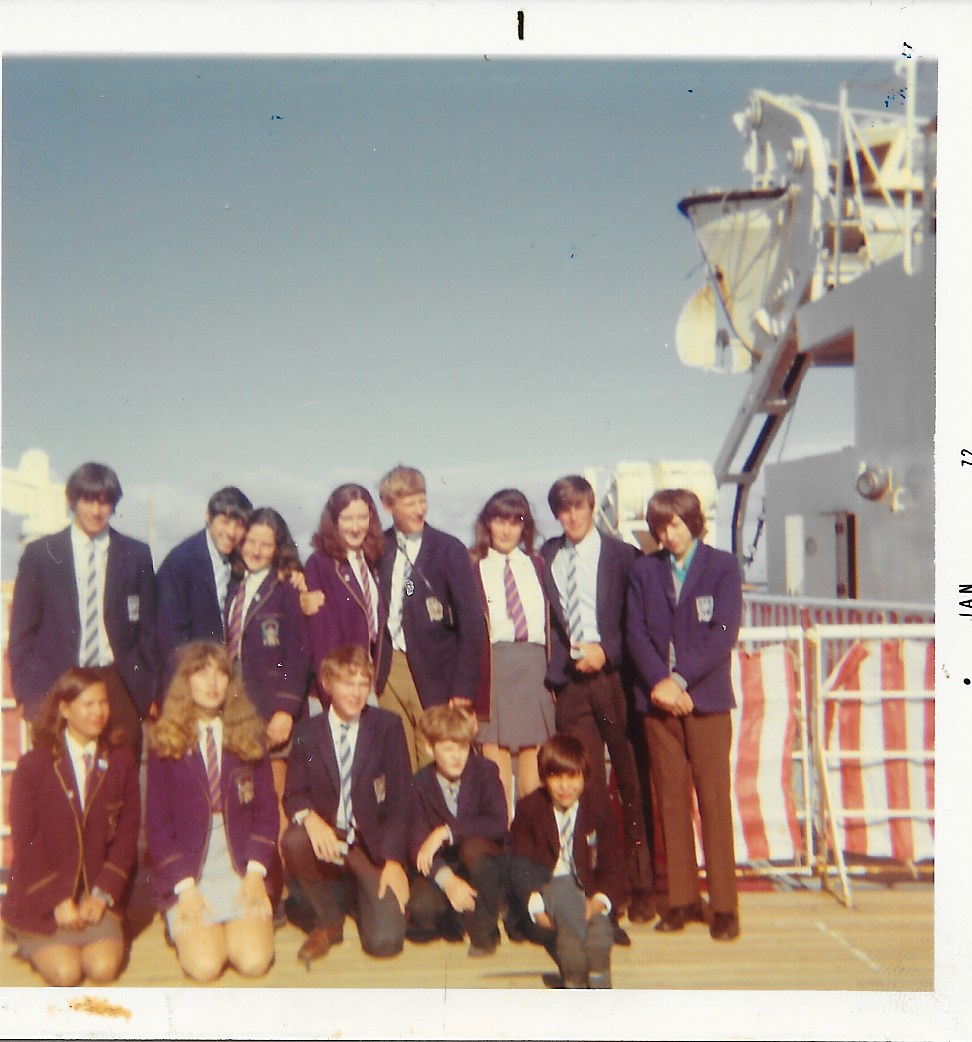

Aitken in Australia
Not only did Falkirk send Ales to Australia, the town may also be credited with the establishment of brewing in that country. It has long been suggested that the founder of the Victoria Brewery in Melbourne, Thomas Aitken, was a relative of the Falkirk-based family, but this had not been fully established. I was thrilled to find this News of Adelaide article:
“Brewer Mr. Thomas Aitken Nation, of Toorak Gardens, who has retired after 45 years' service with the S.A. Brewing Co., reckons he has brewed enough beer during that period to float the Queen Elizabeth in. His great-great-grandfather built the Falkirk brewery in Scotland, a grandfather founded the Victoria Brewery in Melbourne in 1854, and Mr. Nation has studied brewing in Germany, Denmark, and Czechoslovakia. He reckons that modern beer is infinitely superior to the old mead that our ancestors drank and says that it should be between 50 and 52 deg. when drunk. “If you have it colder you lose the full flavour,” he says. “When people drink it colder, as many do, their palates are chilled and they lose the full flavour.” (18 April 1947)”
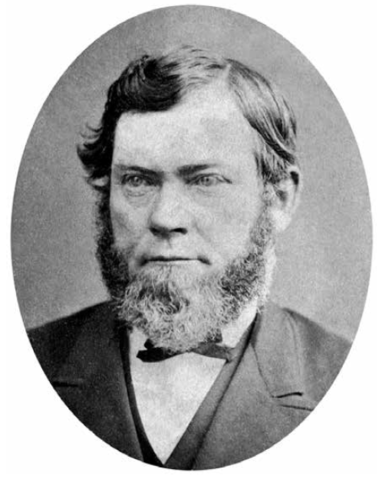

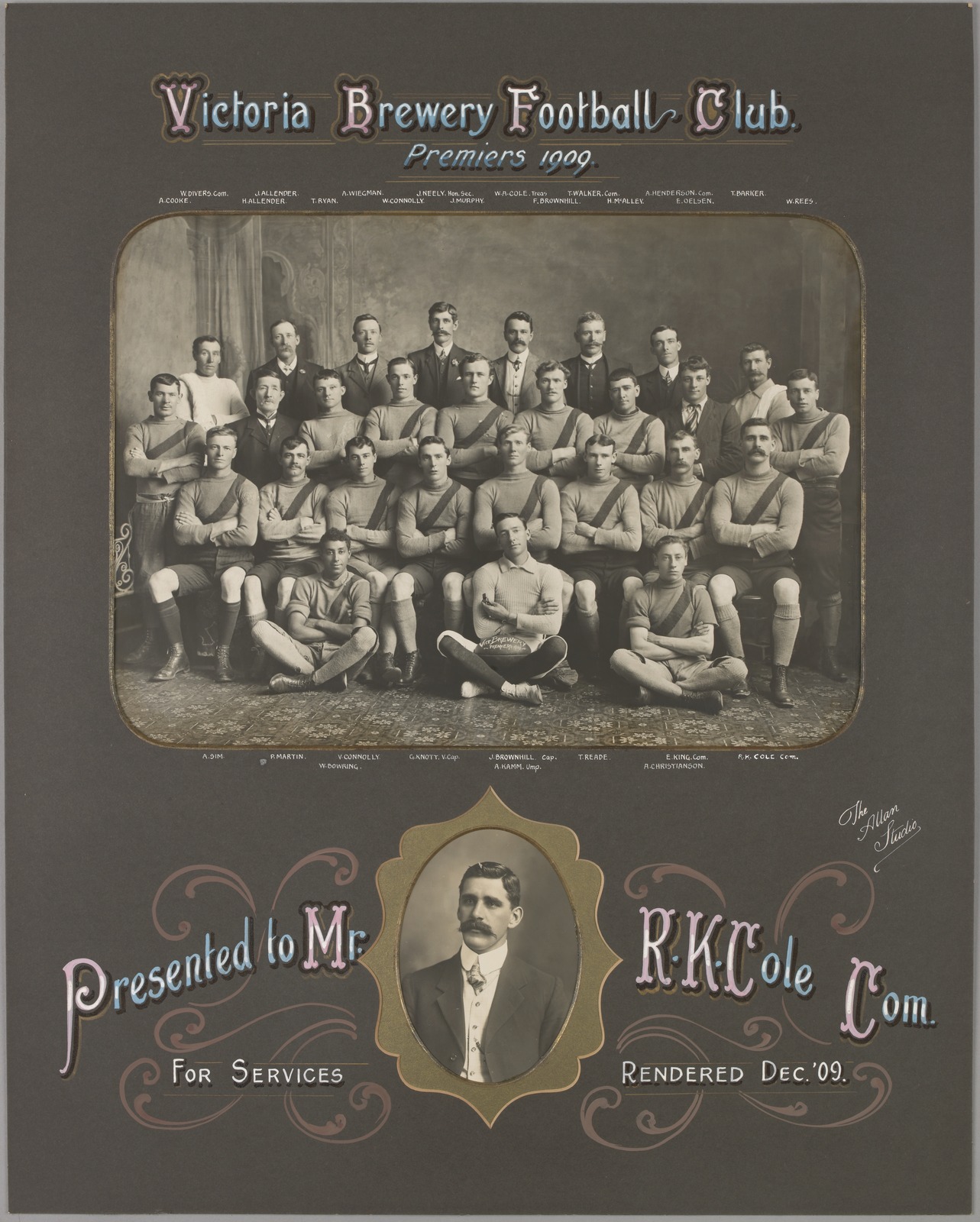

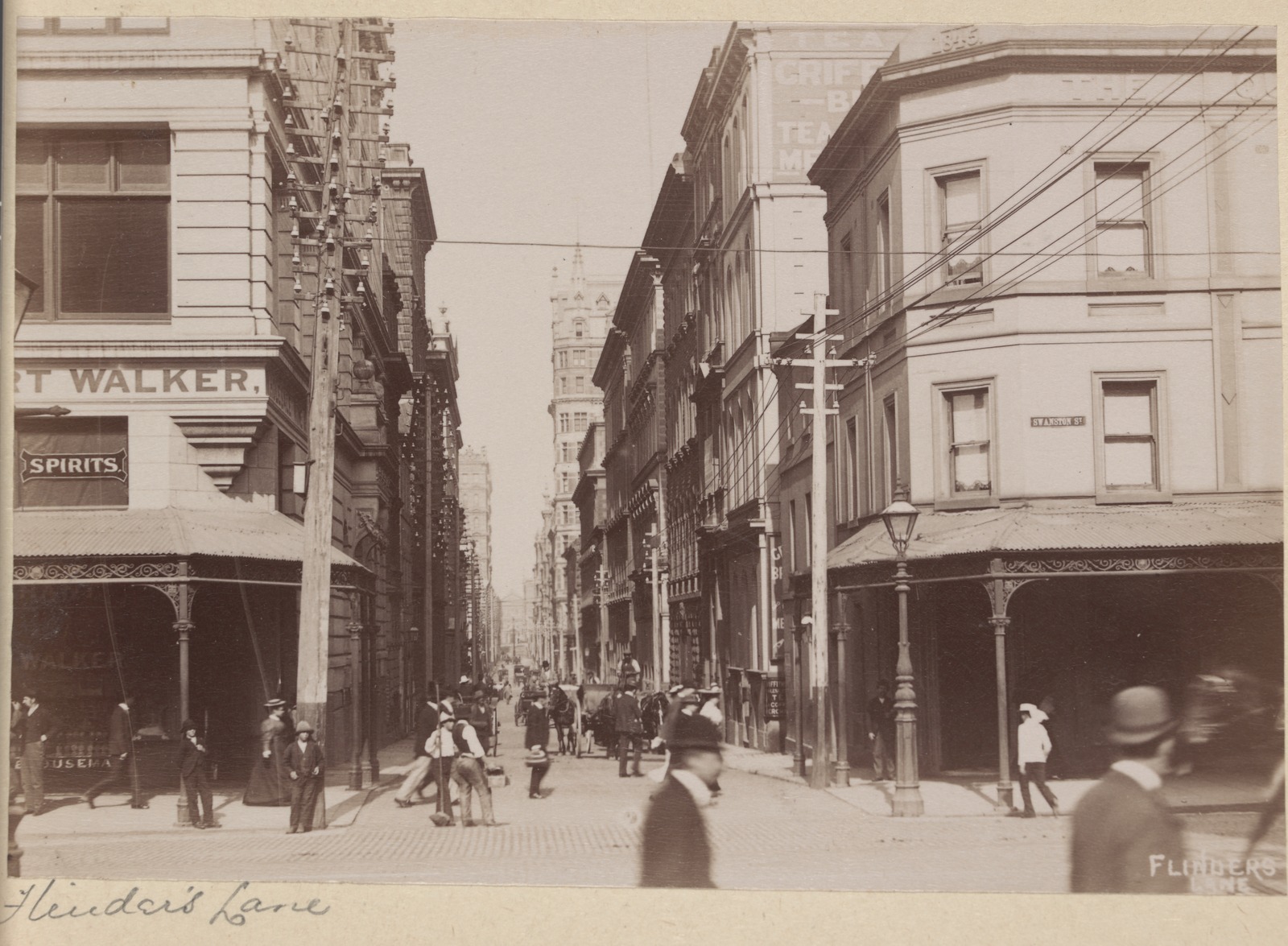

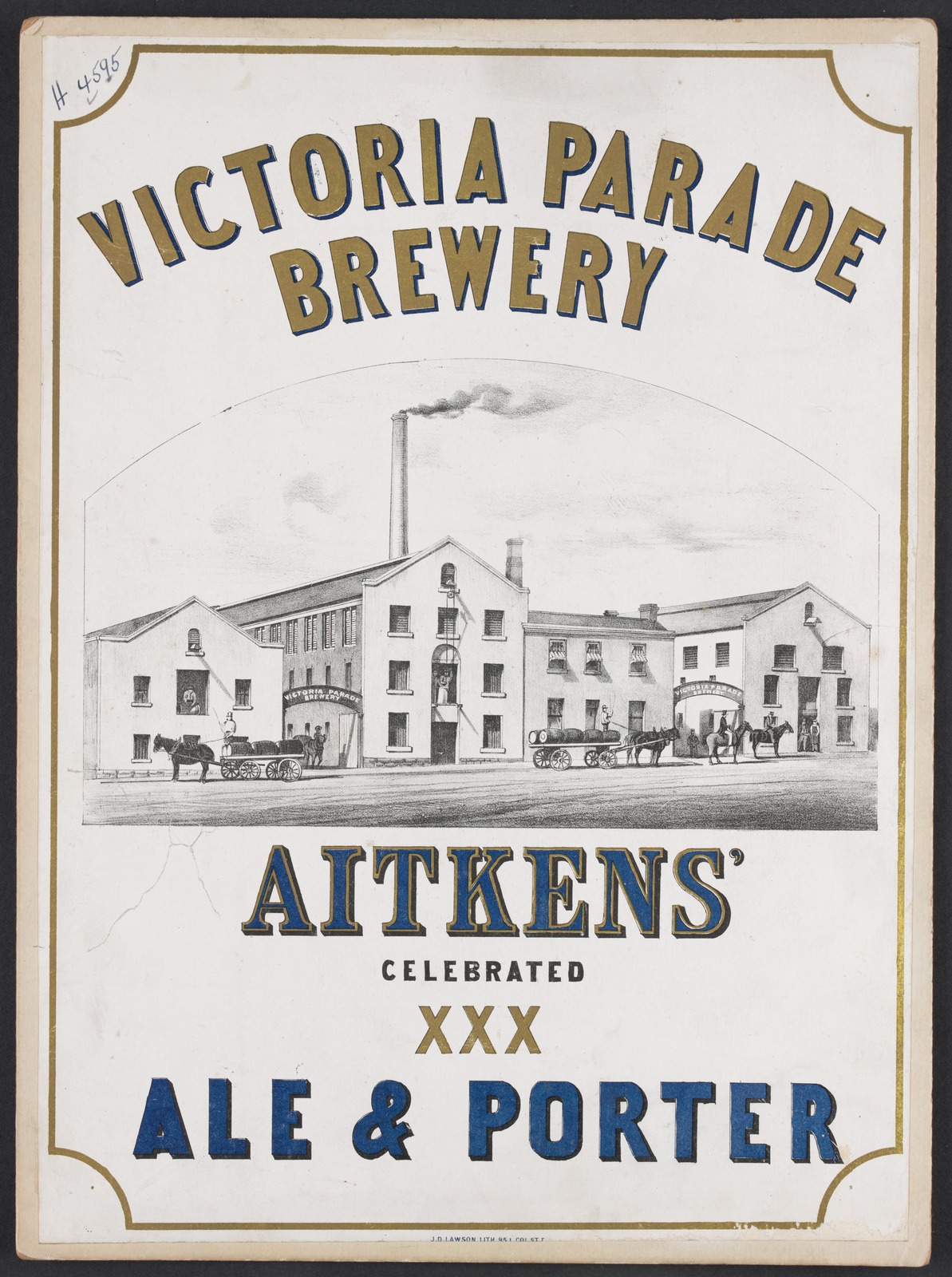

The Melbourne Herald gave further details of “the proprietor of the well-known Victoria Parade Brewery” in his obituary (5 January 1884):
“He arrived in Melbourne in the year 1842, being at that time a youth of 19 with intelligence and energy to aid him in his career. In Scotland he had acquired a knowledge of the brewing trade, but he turned his attention to other pursuits at first and was fairly successful. The gold discoveries of 1851 gave an impetus to trade, and Mr Aitken, being of a speculative disposition, took advantage of the tide of affairs and started the Corio Brewery in Geelong. Melbourne, however, offered better advantages, and in 1852 he commenced business in the Union Brewery, Lonsdale street west; shifting two years later, to the site of the present Victoria Parade Brewery. Mr Aitken’s business venture developed into an extensive undertaking, the secret of success being the production of a good article, and the employment of business capabilities to push the trade. The premises owned by the deceased gentleman cover an area of more than three acres of land. The building is effective in design, with an imposing and ornamental facade to the front elevation. In 1861 Mr Aitken established the first distillery under the new Distillation Act, which also proved a success, and the business reached such proportions that the value of the property and plant is now close upon £80,000.”
That’s over £10 million today!
Aitken also bought the Market Square hotel, which he renamed the Rob Roy, in Melbourne. According to Port Phillip Gazette and Settler’s Journal (3 September 1850), the hotel welcomed newly arrived immigrants and “bushmen.” The hotel boasted “A well fleeted stock of Spirits, Wines, Ales and Porter always on hand.”
The Aitken distillery in Melbourne, which still stands today. Unfortunately, the brewery in Falkirk was demolished and all that is left are archives. The distillery was left in a slightly better state and is currently being restored.
By Iain Murray, Great Place volunteer, Hidden Heritage: Industry and Empire project 2020.
